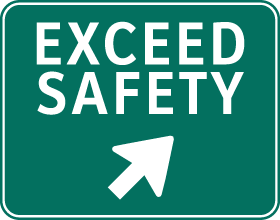Overview & Objectives
As a general industry worker, you must be aware of the latest safety standards set by the Occupational Safety and Health Administration (OSHA). You also must find time in your busy schedule to complete your required continuing education units (CEU). Designed to allow you to accomplish both, our OSHA 10-Hour General Industry course is an online OSHA-authorized version of OSHA’s popular Outreach Training Program and covers what you need to know to stay safe on the job. Upon completion, all course participants will receive a certificate of completion right away and earn their Department of Labor (DOL)/OSHA 10-Hour Card shipped within two weeks, allowing them to seek or maintain employment.
Throughout this online course, you will receive 10 hours of training that covers relevant job site safety topics, including:
- Worker rights and employer responsibilities under OSHA
- Requirements for selecting and wearing personal protective equipment (PPE)
- How to protect oneself and coworkers from slip, trip, and fall hazards
- Major material handling hazards
- Fixed and portable ladders
- Unguarded and inadequately guarded machinery
- Flammable and combustible liquids
- Spray finishing, compressed gases, and dipping and coating operations
- Electrical hazards
- Effects of workplace hazards on the human body and how to protect against them
- Activities that can lead to MSD and RMD injury and illness
- The major difference between acute and chronic health effects
- Emergency egress and access, planning, and fire prevention and protection
- The role of management and workers in improving a company’s current safety culture
- Rights that require workers to know the identity and properties of workplace chemicals
- Employer requirements for effectively reducing and preventing employee injuries, illnesses, and fatalities through a safety and health program
With knowledge about these topics, you’ll be trained on recognition, avoidance, abatement, and prevention of safety and health hazards in the workplace. You’ll also be up-to-date on workers’ rights, employer responsibilities, and how to file a complaint with OSHA and the Department of Labor (DOL).


